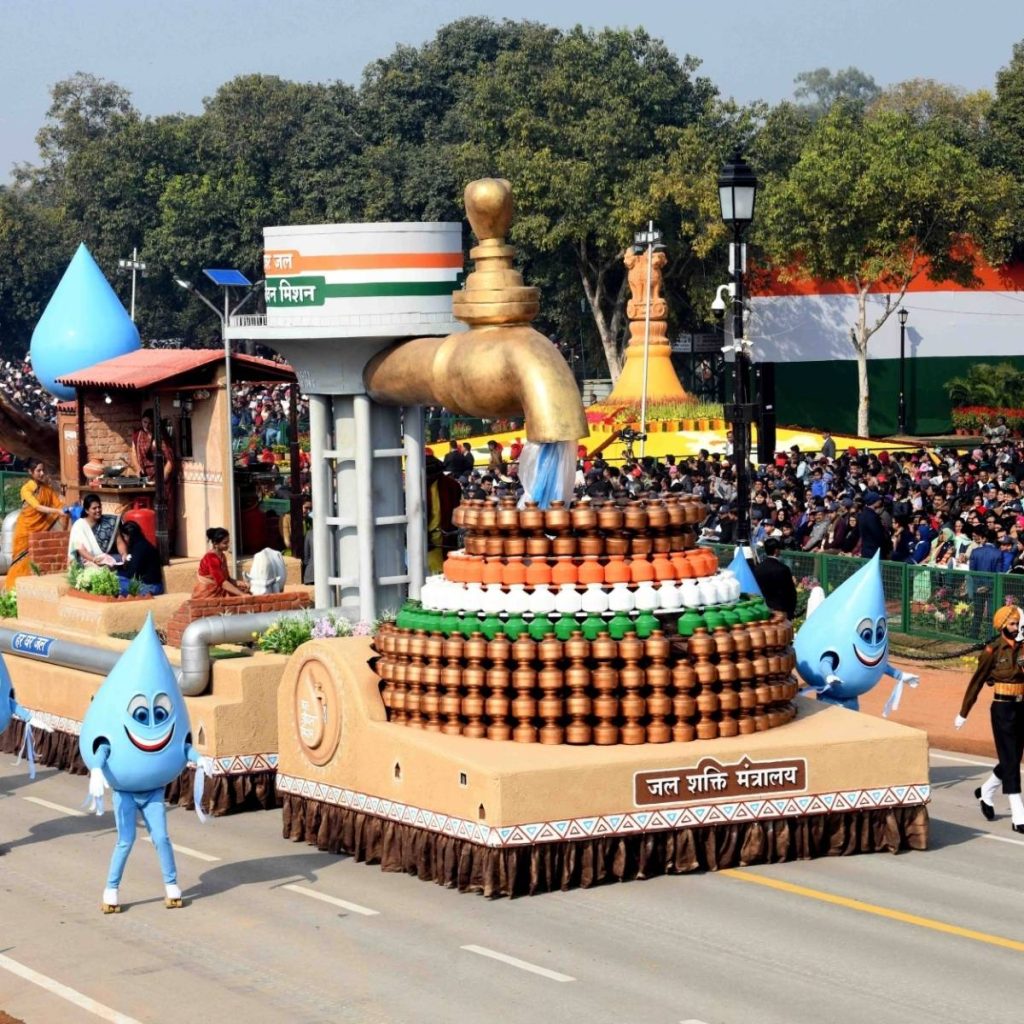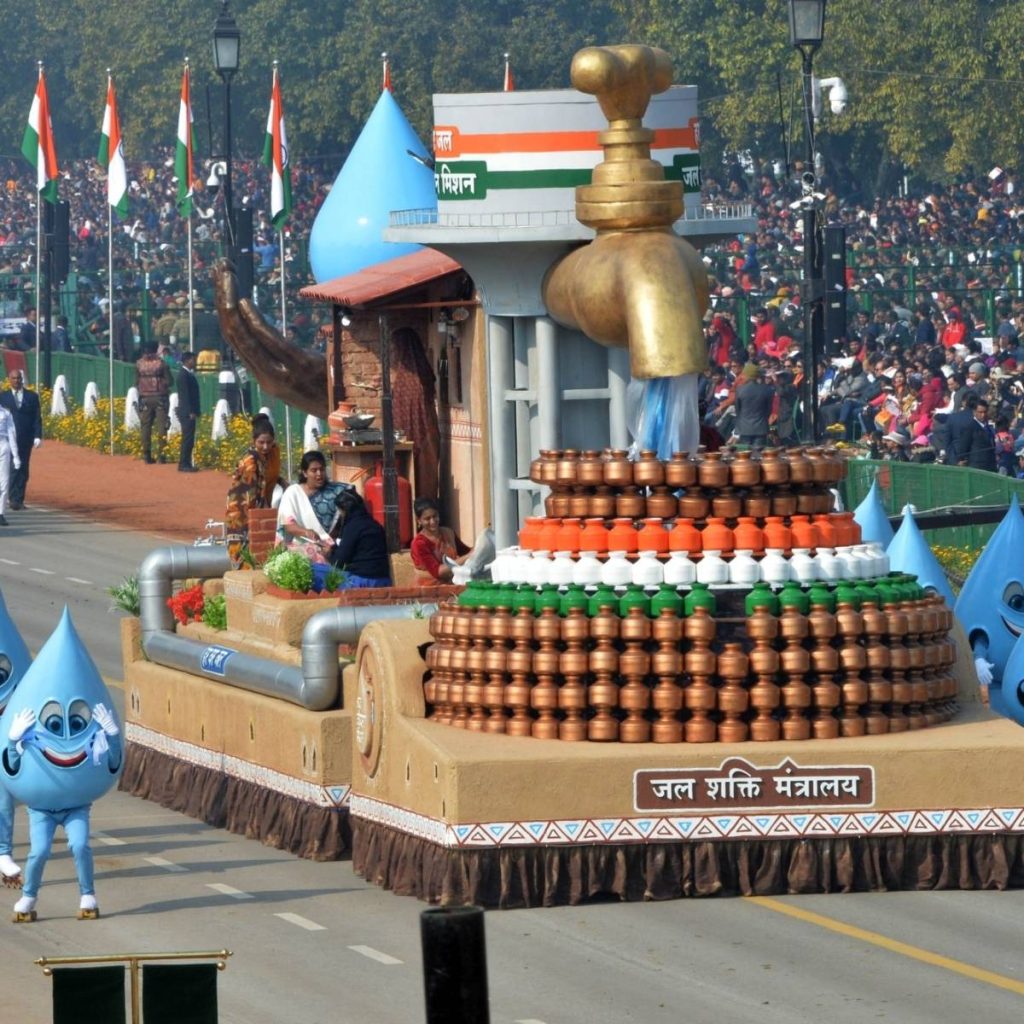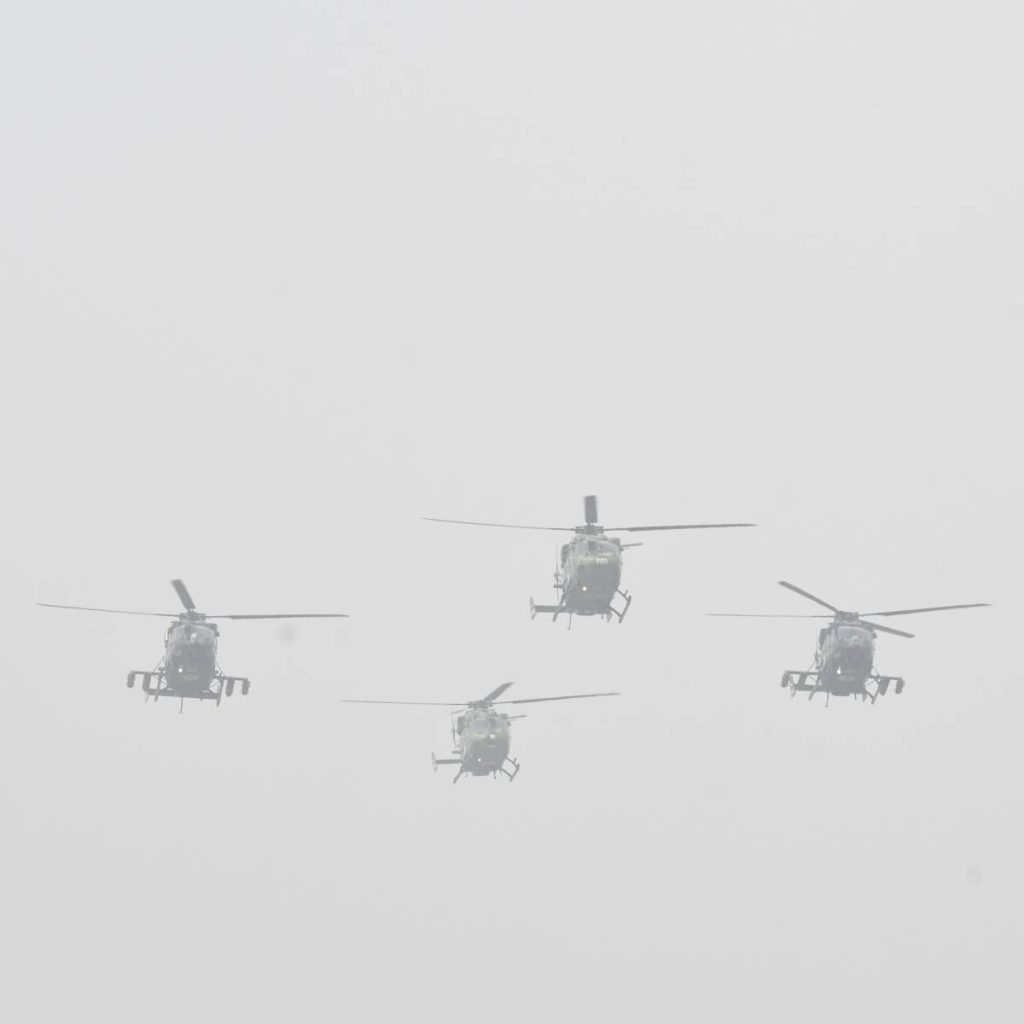
The security personnel were even checking the Covid vaccination certificates at the entrance of the Rajpath area…reports Asian Lite News
The teeth-chattering cold on Wednesday morning failed to dampen the spirits of the people coming to witness the Republic Day parade at the majestic Rajpath, here.
The people started arriving at the Rajpath as early as 5 a.m. in the morning, even as the parade begins at 10.30 a.m.
However, this year the rush compared to previous years was less, possibly owing to the fear of the latest Omicron variant of novel coronavirus. Notably this is the second time India is celebrating the Republic Day in a subdued manner.
Still almost every seat for the visitors at the Rajpath was occupied. It may be also mentioned that the seating arrangement was adhering to the Covid-induced protocol of keeping distance.
The security personnel were even checking the Covid vaccination certificates at the entrance of the Rajpath area.
People, who were standing in the queues, could be heard singing and chanting patriotic songs and slogans.
Amid chilly weather in the morning, the slogans “Bharat Mata Ki Jai” and “Vande Matram” injected the heat of patriotism in the veins of the people.
The parade was yet to start at the time of filing of this report.
Jal Jeevan Mission: Changing Lives
A sky blue, smiling, huge drop of water stands resting one a flowing tap right in front, with a traditional Ladakhi mud house behind it. On the one hand are happy Ladakhi people and on the other, the support teams, some women are testing water sources, some men are putting in pipelines in place and yet some, checking connections.
For the Jal Shakti Ministry to showcase its flagship project running in Mission Mode – Jal Jeevan Mission (JJM), its tableau, ‘Jal Jeevan Mission: Changing Lives’ at the Republic Day parade this year could not have been a better opportunity. And the location chosen was Ladakh.
The harshest of terrain and sub-zero temperatures, sometimes even minus 20 at night. Not only are the water sources frozen, but even the supply lines are inoperative because of extreme winter as sometimes the pipes are frozen or burst regularly.
It is in such inclement weather conditions and more than 11,000 feet average altitude that the JJM has sought to bring about a change. The JJM, as it is popular, aims at providing functional tap water connection to every rural household across India.
Ladakh has the lowest population density in the country (2.8 person / sq km), villages are scattered, and rainfall is scarce. It remains cut off from the rest of the country for a few months in a year due to closure of passes during winters. This affects the supply of materials badly. Further, most of the water sources are in inaccessible areas, in many areas of Ladakh the water bodies freeze in winters, a lot of labour is required for construction and help of animals & helicopters is taken to lift and transport the material.
“Due to freezing temperatures, in place of regular GI pipe, HDPE pipes are used, and main supply lines are laid below frost line. Wherever pipes come above the frost line, these are encased in 4″ dm of glass wool, wood, aluminium jacketing for insulation. Solar power plays an integral part in the water supply chain and ensures continuous flow of water in the pipeline,” said an official.
There are technical challenges as well to draw water from frozen water sources.
In such areas where people were forced to dig ice and drink it after melting, now getting clean tap water in the comfort of their homes, schools and anganwadis. “Not only that, through sensor-based IoT systems they know live data about quantity, quality and monitoring of the water supplied. Women in villages have been trained to test the quality of water using Field Test Kits (FTKs),” he added.
Ladakh was just a showcase. Across India, the JJM has trained more than 8.6 lakh women so far in ensuring clean tap water to homes with the help of FTKs. Water testing laboratories in the country are now open for the public to get their drinking water tested.
A digital board displaying live temperature and real time data about water supply, chlorination etc., and progress of the Mission is also presented.
Union Jal Shakti Minister Gajendra Singh Shekhawat said, “In a very short span of 29 months since its announcement in August 2019, Jal Jeevan Mission has provided tap water supply to more than 5.63 crore rural households, 8.4 lakh schools and 8.6 lakh anganwadi centres in India.a
At the time of announcement of the Mission, only 3.23 crore homes had tap water supply and today more than 8.87 crore homes have tap water connections.
Akin to Ladakh, the JJM Jal Jeevan Mission has been working in the most difficult terrain of the country to provide tap water to communities in high altitudes of Himachal Pradesh or Uttarakhand or in deserts of Rajasthan and Gujarat.
ROYAL FLYPAST
The flypast witnessing 75 aircraft and helicopters of the Indian Air Force and displaying a number of formations left people stunned at Rajpath during the Republic Day parade on January 26.
Vintage, as well as current modern aircraft and helicopters like Rafale, Sukhoi, Jaguar, Mi-17, Sarang, Apache and Dakota, displayed different formations, including Rahat, Meghna, Eklavya, Trishul, Tiranga, Vijay and Amrit.
Precision at tremendous speeds was on display and thundering aerobatics done with professional skills at Rajpath in the national capital.
The Rahat formation comprising five LHA flew in five ‘Arrowhead’ formations. The formation flypast over the water channel North of Rajpath.
The Meghna formation comprising CH-47 Chinook in lead and four Mi-17 1V in echelon, flew in the five ‘Arrowhead’ formation.
The Eklavya formation consisting of Mi-35 in lead with four Apache heptrs in echelon flew in five ‘Arrowhead” formation.
The Tangail formation comprising a Dakota in lead with two Dornier in echelon flew in Vic’ formation.
The Traan formation comprising 1C17 with two C 130A in echelon flew in Vic formation.
Netra formation would comprise one x AEW & C with two MiG 29 UPG and two Su-30 MKI in echelon flew in the Arrowhead formation, after Traan formation.
Vinaash formation comprising five Rafale flew in Arrowhead formation after Netra formation.
Thereafter, Baaz formation consisting of one Rafale, two Jaguar, two MiG-29 UPG and Su-30 MI in seven ‘Arrowhead’ formations.
Trishul formation comprising three Su-30 MKI flew in Vic formation, one minute after Baaz formation approached the dias. The formation pulled up and outward for the Trishul maneuver.
Varuna formation comprised one P8-i with two MiG-29K in echelon and flew in Vic formation behind Trishul formation.
Five Sarang (ALH) flew in ladder formation streaming Tricolour after Varuna formation.
One Rafale flew in at 900 kmph behind Tiranga formation. Approaching the dias, the aircraft pulled up for Vertical Charlie and carried out 21/2 turns.
In the end, the Amrit formation comprising 17 Jaguar made a figure of 75 aircraft and helicopters.
The parade culminated with the national anthem and the release of Tricolour balloons.
ALSO READ-India @ 73: PM greets nation on special day







